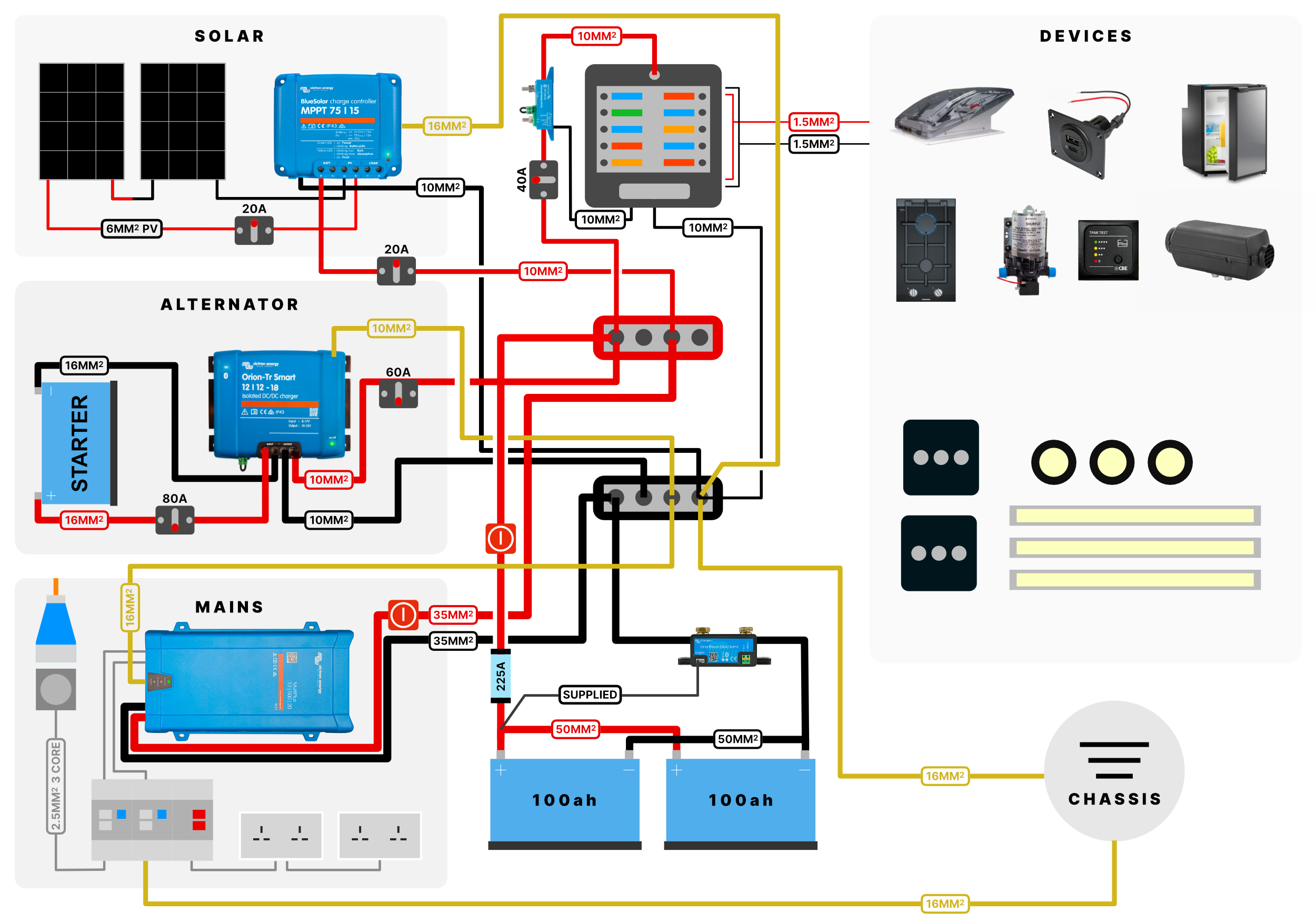
Hi everyone - was hoping some kind folks could do me a massive favour and look over my campervan schematic. I've been a bit confused about wire gauges and fuses in particular, but between consulting other schematics and the Victron manuals have come up with this. In general all cable runs are short as everything is super compact in the one under-bed cabinet, excluding the starter battery to B2B charger run which is approx 2.5m. So perhaps the cable gauges are over the the top here, but it's a starting point. (This is my first time doing anything like this so please bear that in mind!)
One question I do have here is do I need to run both positive and negative cables from starter battery to B2B or can I just run the negative from the chassis into the B2B? This would help my cable run be easier/neater from the cabin to the load bay.
Thank you so much (and a happy new year!)

